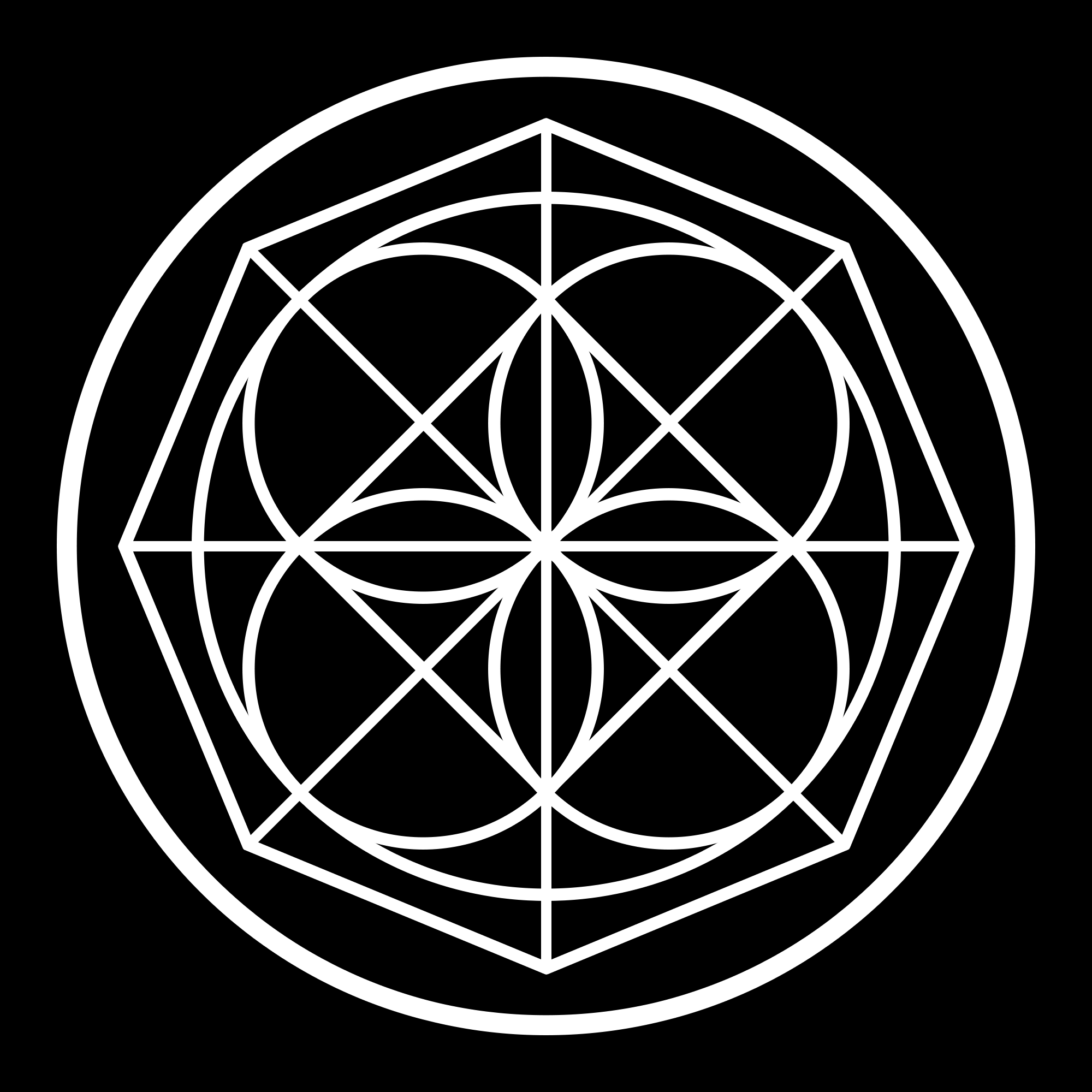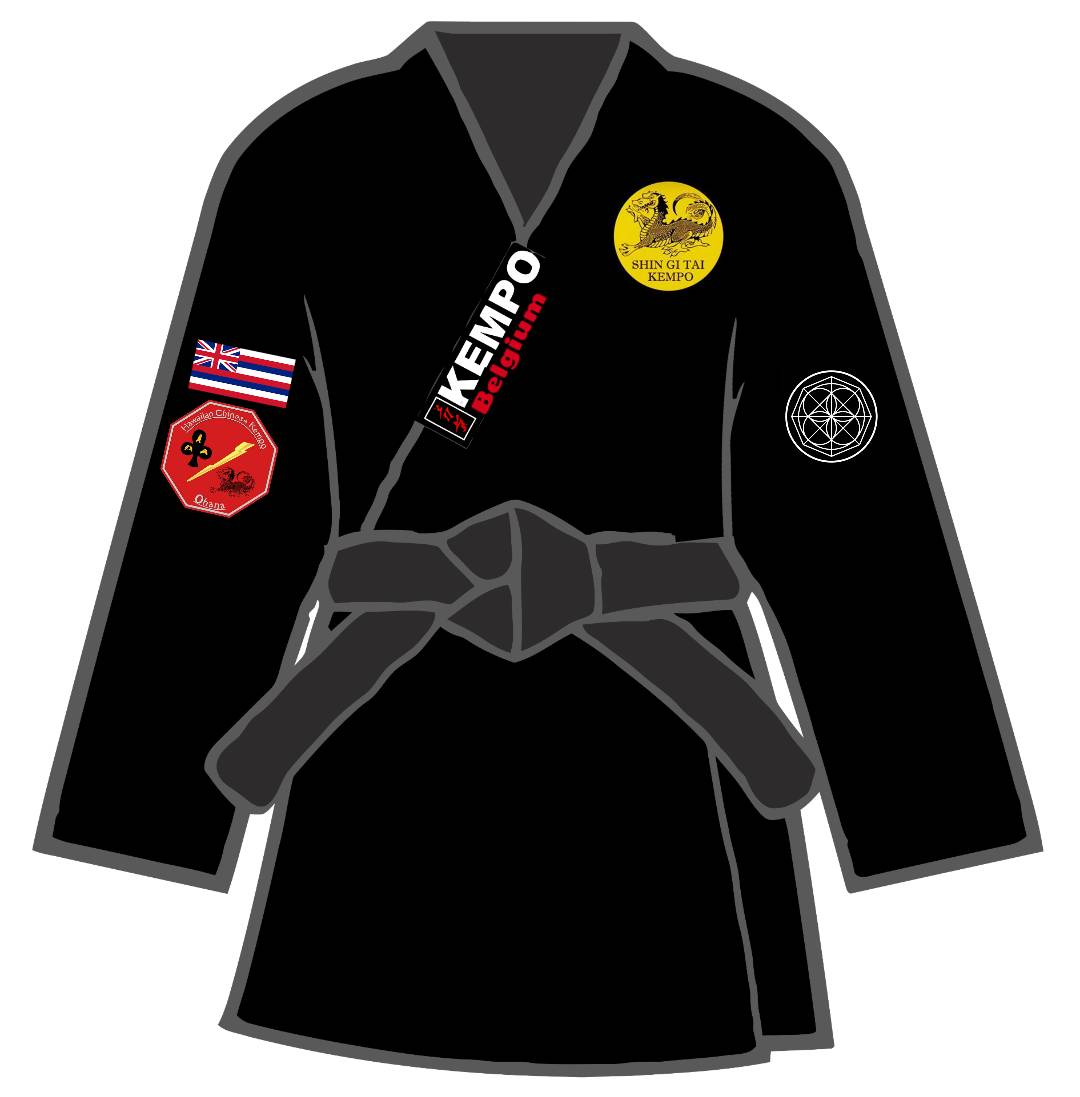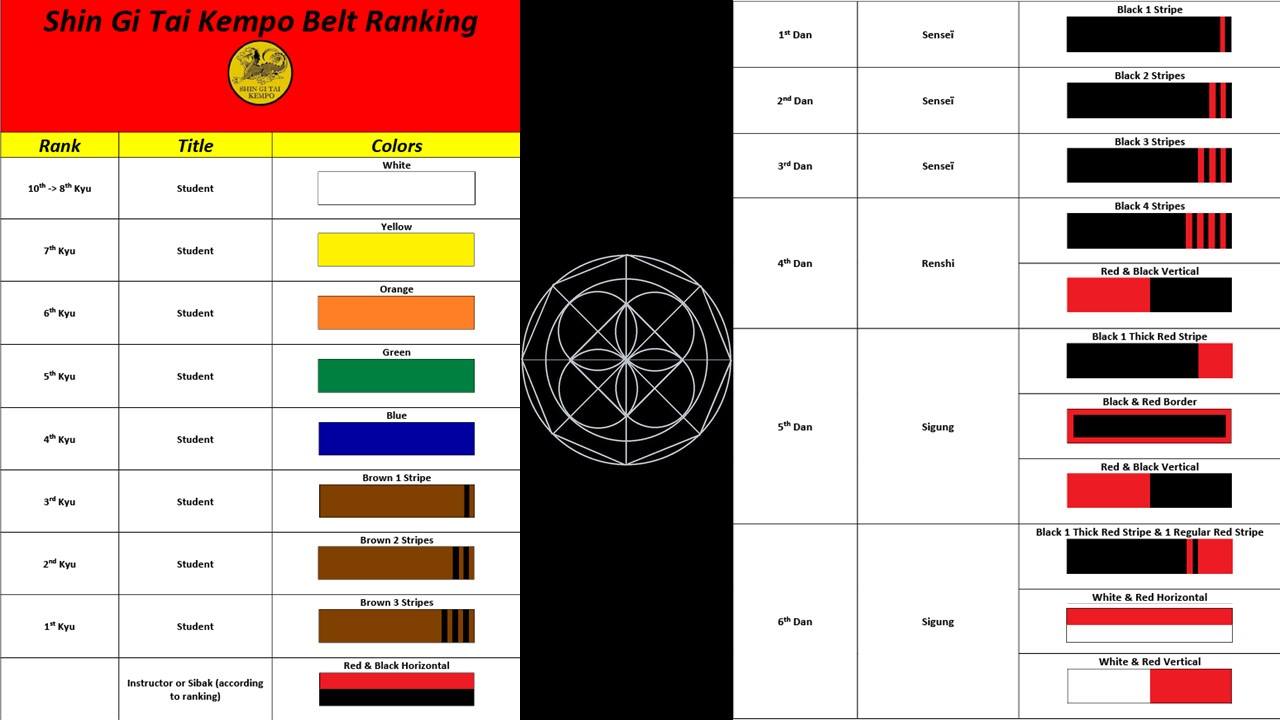Life’s Rules
Throughout his training and his life, the Kempoka will follow five basic rules of life.
Each lesson starts by the greetings. The Kempoka puts his right knee and fist on the ground while he meditates on these five rules:
- We vow to follow the life rules of Shin Gi Tai Kempo.
- We vow respect and faithfulness to our Sijo and teachers.
- A real friendship unites us.
- We commit to use our Martial Art only with purpose of defending ourselves and protecting others.
- We commit to practice its hard discipline and training method with honesty and courtesy.

Dojo Etiquette
The Dojo etiquette is defined as the behavior expressing politeness and courtesy. It’s a respectfully attitude towards others and dictated by the traditional martial arts. The greetings are one of the expression of this spiritual state.
The ceremonial is very important to keep the Dojo etiquette alive. It consists of a set of traditions, rites and symbolic moves which are creating a special atmosphere to practice Martial Arts. The Dojo is a place where we train the body as well as the spirit; it’s the source of concentration and mutual respect.

Each disciple must respect his master but also all the oldest persons or who has an higher degree. They deserve our admiration due to their continuous efforts and their patience, they were able to obtain a higher rank.
The etiquette is designed to make sure everyone goes along and is feeling well. The act of being respectful is not imposed as an act of discipline with the scope of hardening students. We are polite with each other to ensure everyone is at ease, and no one should ever feel uncomfortable because he doesn’t know which behavior to adopt.
Observing the etiquette doesn’t makes us better through discipline but by allowing us to be friendly with others. A beginner might find the gestures and ceremonials boring, but, he will quickly discover that the etiquette improves social relationship. A polite attitude with others and a good posture are the key elements for a good atmosphere during a training.
An example to explain on of the Dojo etiquette aspects is how the different members of the club are positioned before and after the lesson. In a traditional Dojo, a little spot or Shinto is dedicated to the veneration of divinities. The Senseï (who was born before) stands near it facing his students. On this altar, we can usually find a representation or picture of the founder, a citation or even a calligraphy expressing the club philosophy or ethic. Students are placed, from left to right, from the lowest to the highest degree. The order of ranks is represented by the below picture. The Sensei’s assistants and all black belts are standing along the right wall; as well as the honor guests if present.
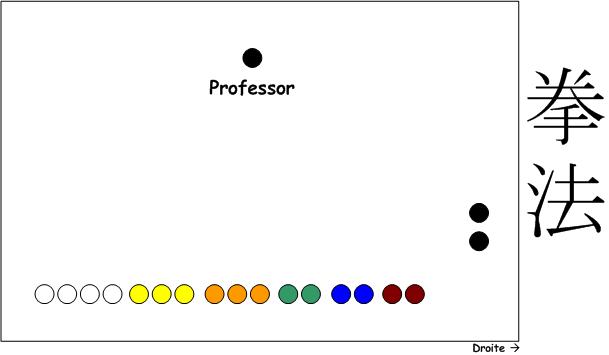
Greetings
Firmly rooted in the Martial Arts traditions, the greetings are fully integrated in Shin Gi Tai Kempo. Every course starts and ends by greetings. More than a symbol of politeness, it also symbolizes practitioners’ mutual respect. This ritual always takes into account the seniority expressed by the degrees. The master is always the first person to be greeted.
With its Martial Arts origins, you must look the person straight in the eyes.

When you are outside the dojo, you can keep your belt in your hand or in your kimono’s vest. Once you enter the dojo, your belt should be in your right hand.
The “Sergeant of arms” (s.o.a) or the person designated by the Sijo or the teacher will gives the order YOI. Everyone is follows the order and stand in yoi.

Following this step, the s.o.a gives the order BELT. Take your belt with both hand on each extremity to spread it above your in one go which should produce a clacking sound.
Press the belt on your forehead, then on the mouth and finally present the belt in front of your heart to spread it again with Kime.
Turn your back to the center of the dojo, put your belt on and take back your initial yoi position.
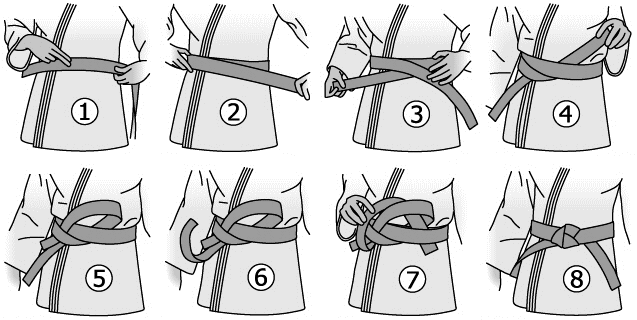
The s.o.a shouts KNEE.
Put your right knee and fist on the ground to meditate on our Shin Gi Tai Kempo life rules.

The s.o.a shouts : ” UP“
All students stand up and greet:
- Everybody greets the Sijo or the teacher first.
- All black belts turn to the colored belts and the colored belts greet the black belts.
- All black belts turn to initial position and everybody greet.

Uniform
Black kimono:
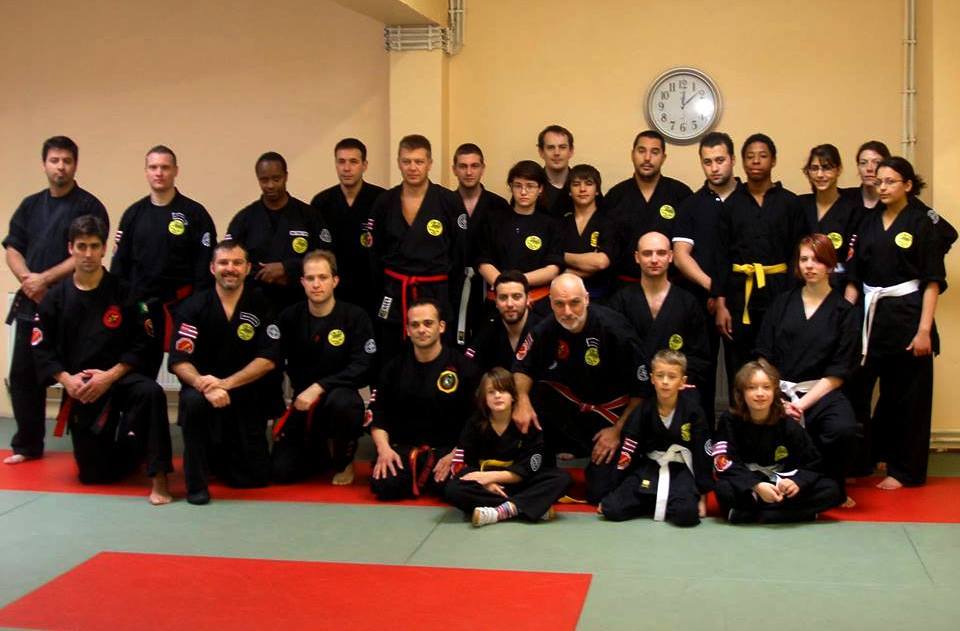
Originally, only the professors were dressed in black. Other kimonos were black and white. Most students and teachers were wearing either a white jacket with black trousers or vice versa. Furthermore, during special courses or ceremonies, teachers were wearing often an outfit similar to a monk’s suit.

Afterward, fully black kimonos were used. This change had two main reasons: black kimonos get dirty less easily and they were used to show the difference between Karate styles.
Nevertheless, some Kempo styles still use black and white kimonos for training, As example: American kenpo, Nihon Kempo and Shaolin Kempo,..
The emblem of the style:
- Circle:
It represents an infinite line which is the path of life. You learn everyday and you will practice your knowledge everyday of your life…
- The dragon:
Traditionally known as the opponent of the tiger, the dragon represents the wisdom and the mind. Therefore, it is also called SHIN. The back color over the yellow shows the first mental color.
The front paws of the dragon express the control and the technique knowledge. They are placed on different levels. The dragon has always the choice so GI.
His back paws and body position represent the body element or Tai.
The combination of the three elements is required because one doesn’t work without the others.
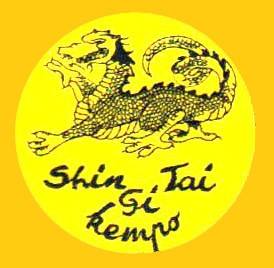
The universal pattern:
